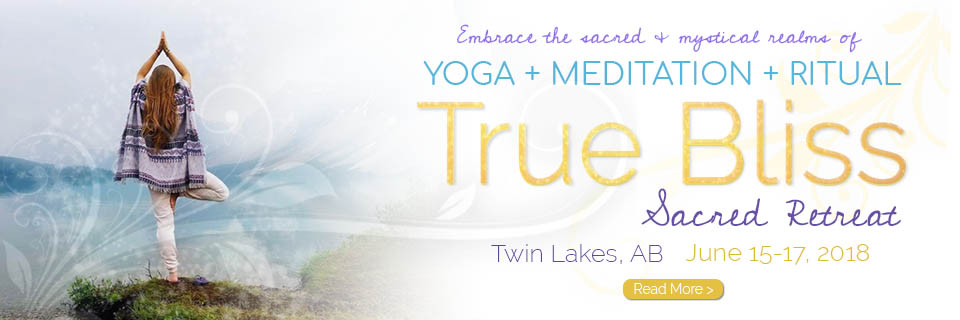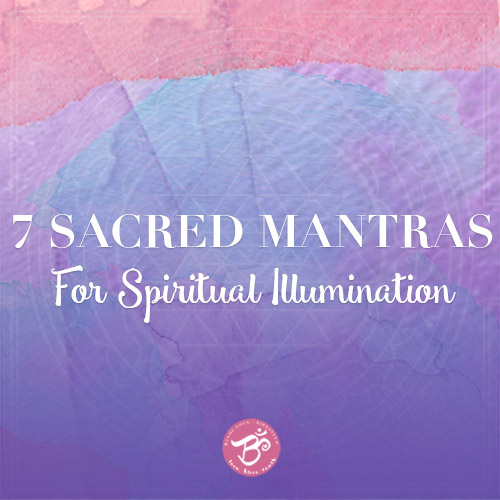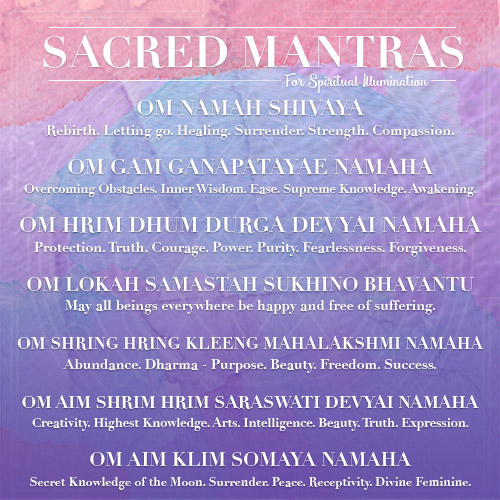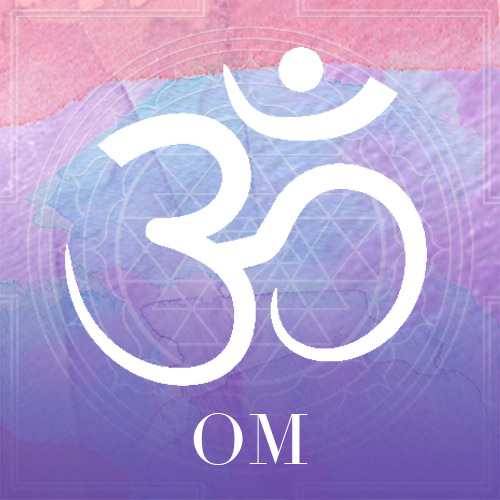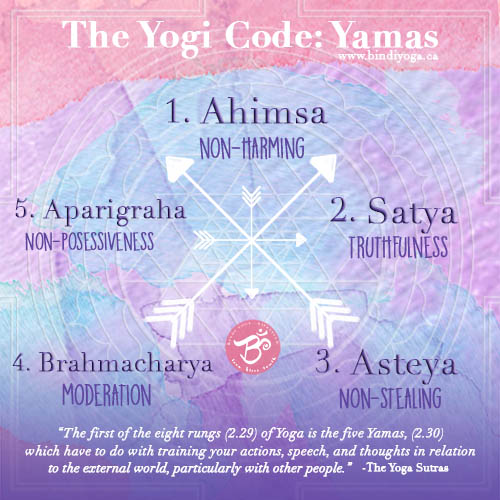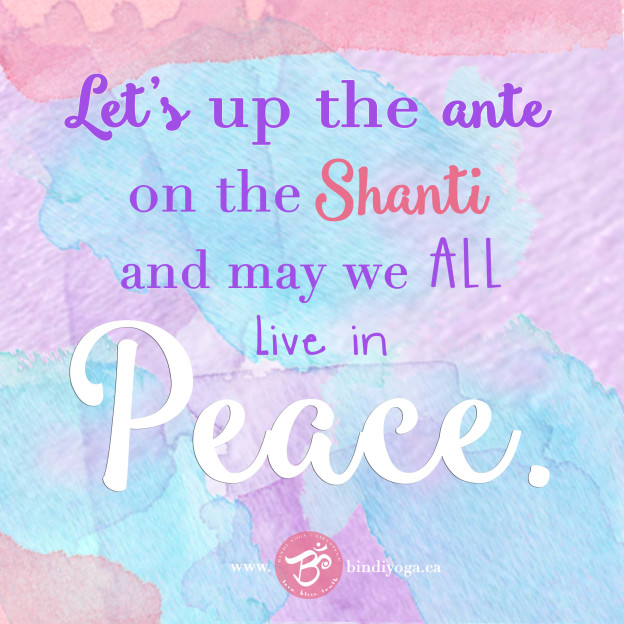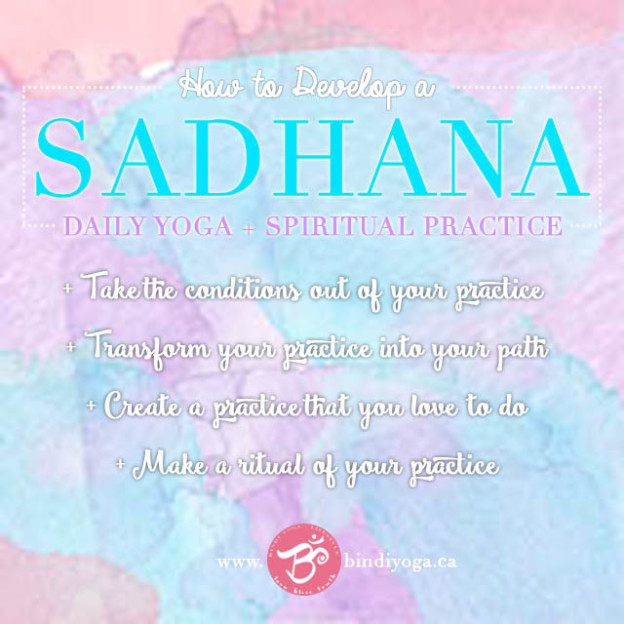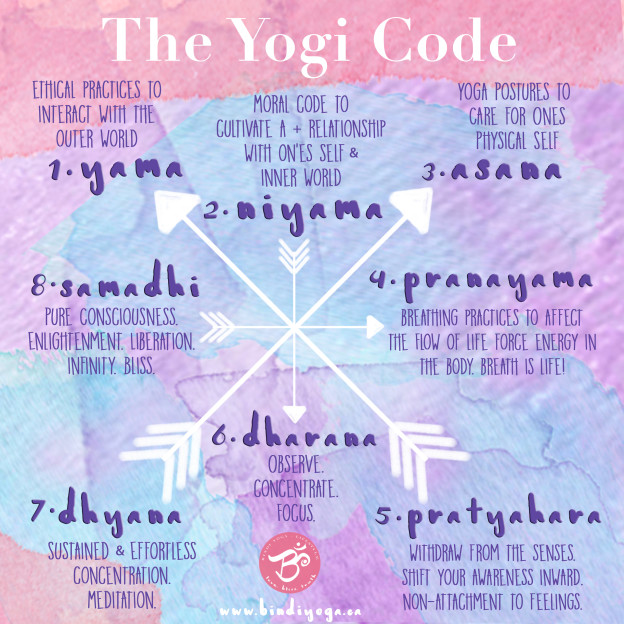It’s been over 10 years since I made the switch to a vegetarian lifestyle (and 2 years later a vegan life.) I first went veg for health reasons to recover from illness, but over the years, my motivation for this lifestyle has become decreasingly about me, and increasingly about WE. I live this lifestyle to be kind to all Beings. The earth, the animals in human form, and of course, the non-human animals.
So today, I share with you the “Kind Diet/Lifestyle” that I live. Beyond just going vegan – here are a few tips to eat and live more compassionate, kind, and sustainable lives.
In our daily lives, we encounter many ways to be the love which is our true nature. Everyday, we can allow the love and kindness that exists in our hearts to be our compass as we navigate through life, steering our actions and encounters. How and what we eat is one of the greatest ways we can share kindness and compassion in our world.
A kind diet is simple— it is an approach to eating that chooses the path of least harm for the people, planet, animals, and of course— yourself! Eating a kind diet is based on the principles of non-violence, non-stealing, non-harming, responsibility, moderation, sustainability and purity for the health and wellness of all beings everywhere.
When deciding what to eat, where to eat, and what to shop for, consider these “6 Steps to Eat a Kind Diet!”
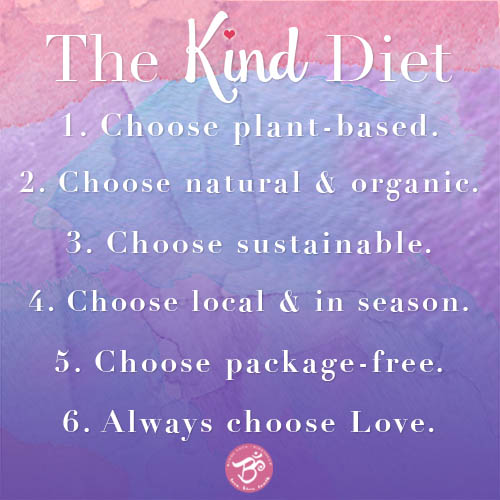
1. First, choose plant based.
Go plant-based— be kind to yourself and your body, the animals, and the planet. A diet rich in fruits, vegetables, beans, legumes, seeds and nuts is scientifically proven to reduce the risk of many diseases and ailments compared to a typical western diet.
Did you know…
+ Going vegan brings greater environmental benefits than buying a hybrid vehicle or eschewing showers for 6 months.
+ It takes 2,400 gallons of water to produce one pound of beef, but only 25 gallons to produce a pound of wheat.
+ Raising animals for food uses 30 percent of the Earth’s land mass – or an area about the size of Asia.
+ 7 football fields of land are bulldozed every minute to create more room for farmed animals.
Eating a complete to primarily plant based diet is the greatest thing you can do to reduce your carbon footprint, express kindness and love to all animals and the planet, and become healthier.
2. Second, choose natural or organic.
Choosing natural and organic means that you are investing in food and products that have not been genetically modified, chemically grown or produced, are minimally processed and do not contain any added hormones, artificial colors or flavors etc.
It also means that the earth is not being polluted with toxic pesticides and chemicals, so the soil, water, air, overall ecosystems and wildlife are preserved and healthy.
And you’ll be supporting farmers and companies that go through great efforts to protect our planet and animals while producing incredibly healthy and chemical free food for us.
Going organic is a great act of kindness for your own health, for the health of the planet and animals, and these amazing farmers!
3. Third, choose sustainable.
According to the US Environmental Protection Agency, the definition of “sustainability” is: “the study of how natural systems function, remain diverse and produce everything it needs for the ecology to remain in balance. It also acknowledges that human civilization takes resources to sustain our modern way of life. Sustainability takes into account how we might live in harmony with the natural world around us, protecting it from damage and destruction.”
Eating primarily plant-based foods and eating organics are two great ways to eat a sustainable diet. Additionally, choose foods and ingredients that are: 1) Abundant in nature in relation to demand, 2) Are easily grown with minimal environmental impact, and 3) Are edible with minimal preparation.
For example, choose olive oil over palm oil, as a large amount of rainforests worldwide are being cut down to grow more palm trees to sustain the supply demand for its oil. Or choose sunflowers or pecans over almonds, as almonds require an immense amount of water to produce.
Try permaculture! “Permaculture is modeled on the relationships found in nature. More specifically it is the design of agriculturally productive ecosystems, which have diversity and stability while considering the existing environment and natural ecosystems. True permaculture, is not just organic farming – the ideology should in practice means harmonious integration of environment and people — providing their food, shelter, and energy in a sustainable way.” – Sustainable Earth Technologies.
4. Next, choose local.
Going local and right to the source of your food significantly reduces the extra fuel, packaging, and costs that it requires to transport your food and ingredients from farmer, to (sometimes) a manufacturer, to distributor, to store and finally—to you.
Go to your local farmers market or go directly meet with farmers in your area to buy your food directly. Choose food and ingredients that are local to your area and in season.
5. Then, choose package-free.
This is so simple— when possible, choose package free. If you have a choice between buying apples that are individually wrapped in styrofoam, in a plastic bag, which will be put in an additional plastic bag at the checkout, or buying apples in bulk, choose the latter.
As a general rule, skip the “middle aisles” of the grocery store which tend to contain heaps of unnecessary plastics, cans, boxes and bags— head straight from the produce area, to the bakery, to the bulk section.
When you shop, bring your own reusable cloth grocery bags and bulk bags to minimize waste.
By reducing single time use plastics and packaging, you greatly reduce your eco-footprint and save SO much waste from entering our landfill, and chemicals in the earth, air and water.
6. Always choose love.
Invest in kindness: Invest your dollars in companies, stores and farms that prioritize kindness and compassion to all beings everywhere with their products and production methods. Choose fair-trade. Choose cruelty-free. Choose sustainable. Choose companies that operate waste-free or emission free in their manufacturing and methods. Choose to support companies that give back to communities and the environment.
Moderation: As a general rule, take only what is offered and use only what is needed.
Generosity: Be generous in sharing food. If you have an abundance of food in your fridge or garden, be sure to share it and nourish other people and animals! Or when it’s gone rotten, give it back to the earth in a compost.
Gratitude: Be grateful for the food you have. Be grateful to the earth that grew your food. The animals and insects that fertilized and pollinated the food to grow. The rain and sun for it’s nourishment. For the hard-work that helped grow it, and the hands that prepared it and put it on your plate.
Eat a kind diet; choose plant based, natural and organic, sustainable, local, package-free and always choose LOVE. As a general rule, always choose the path of least harm – for the health and wellbeing of the people, the planet, the animals and YOU!



